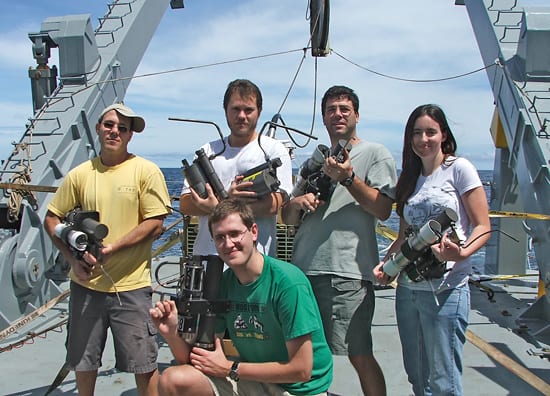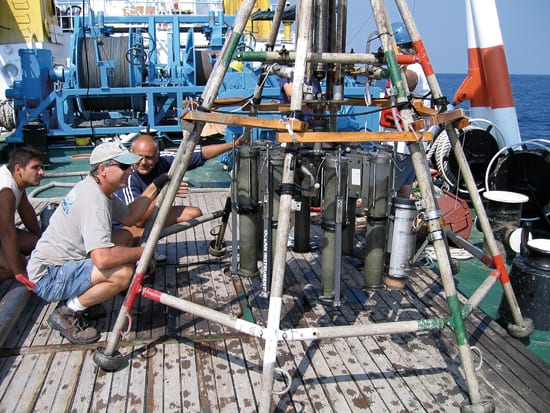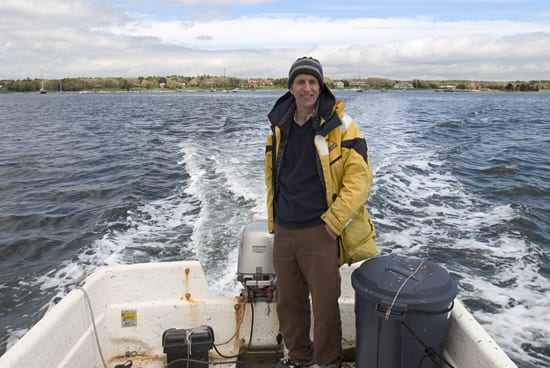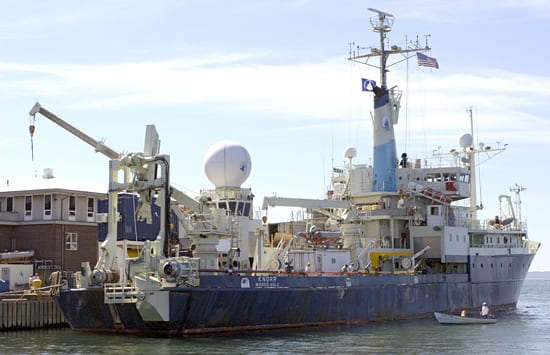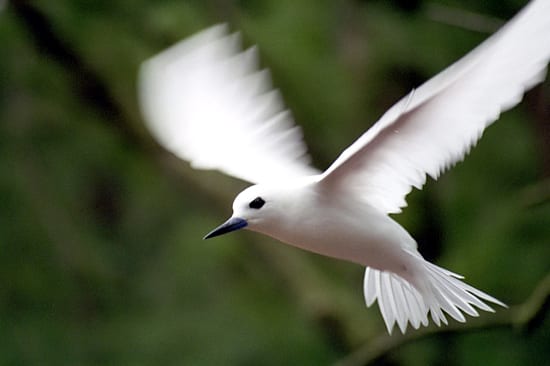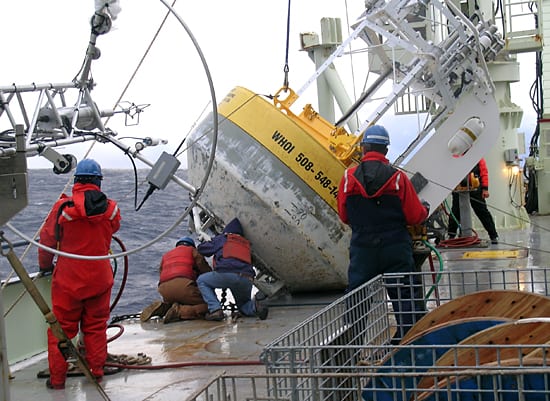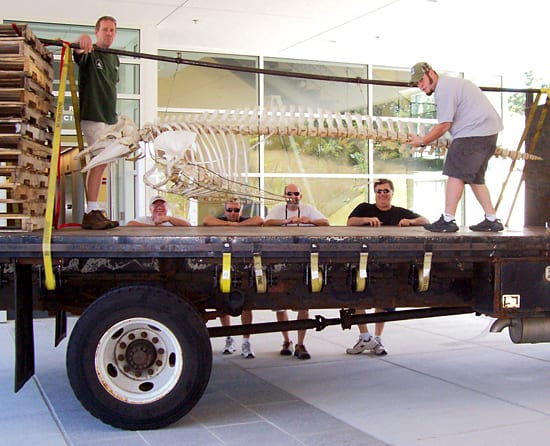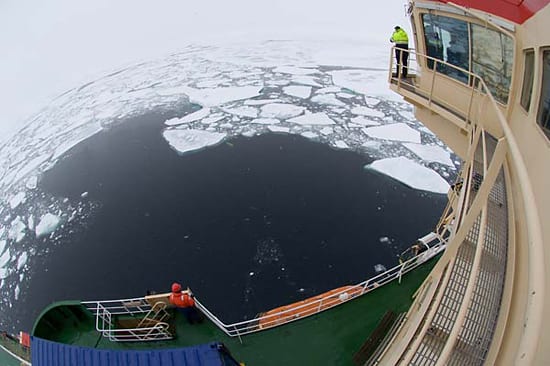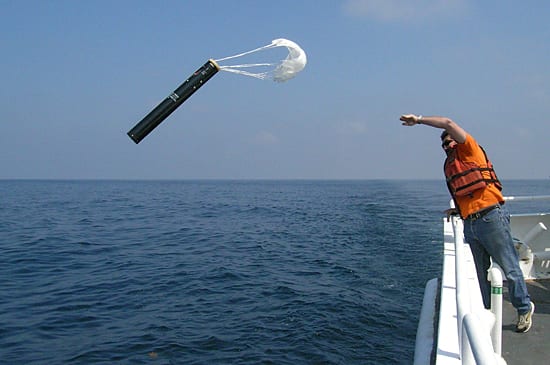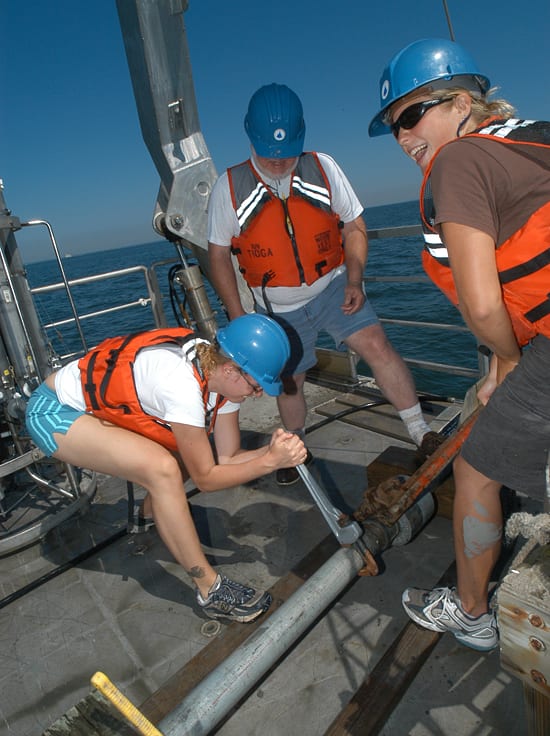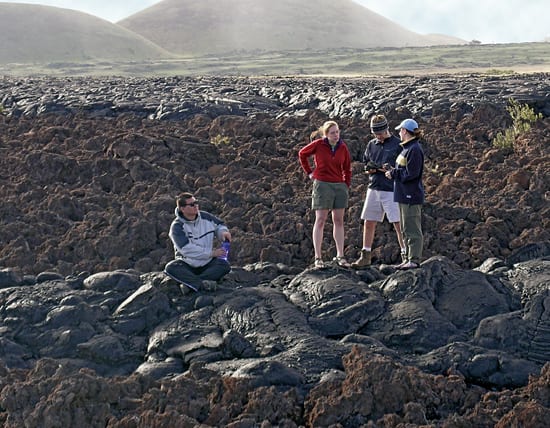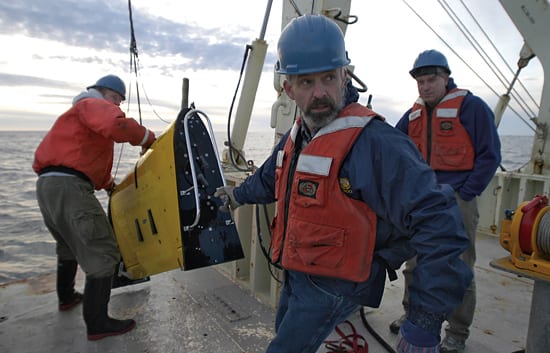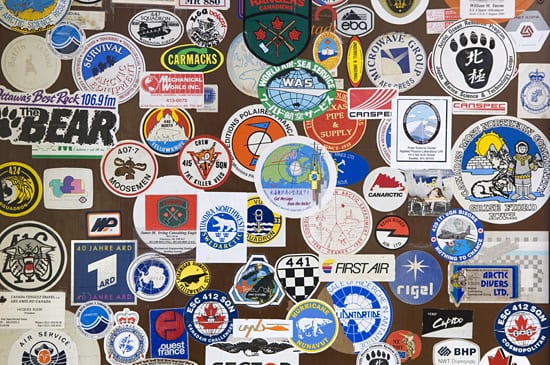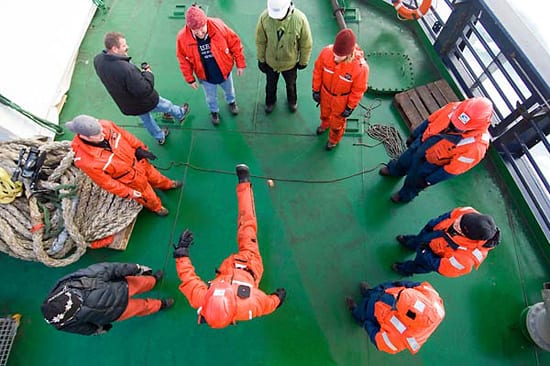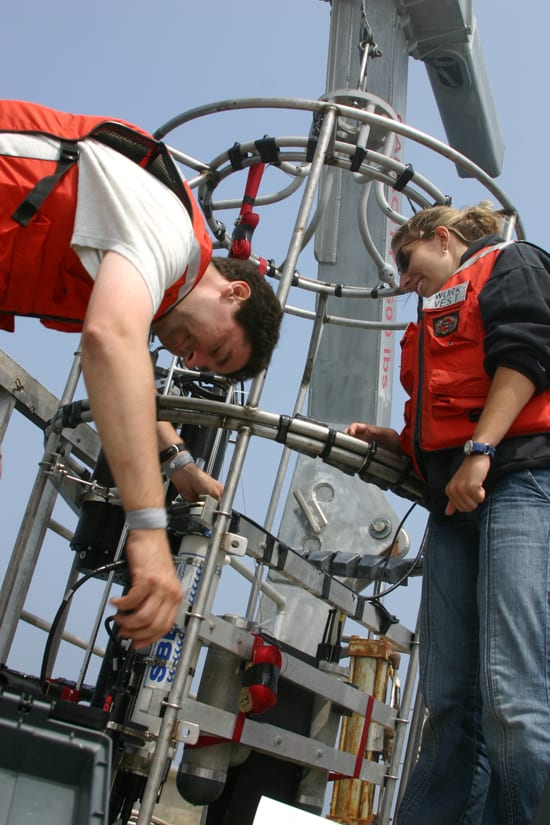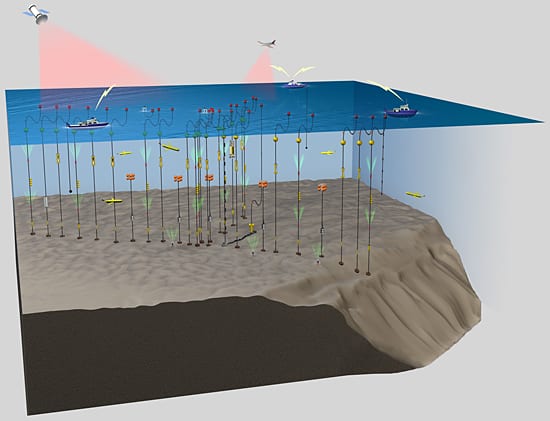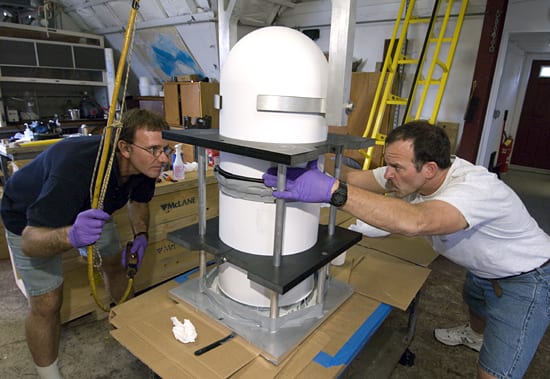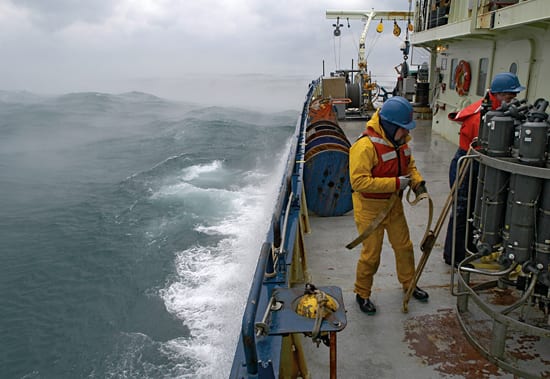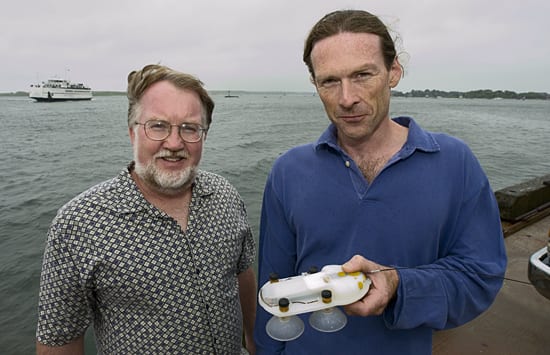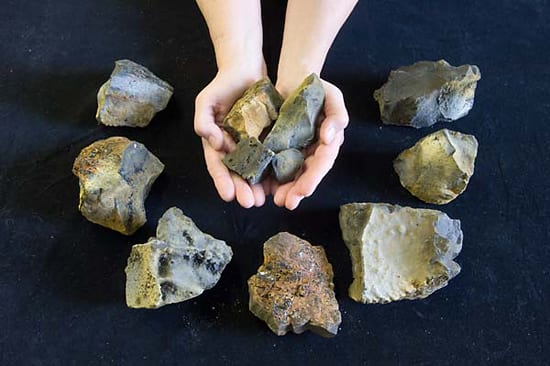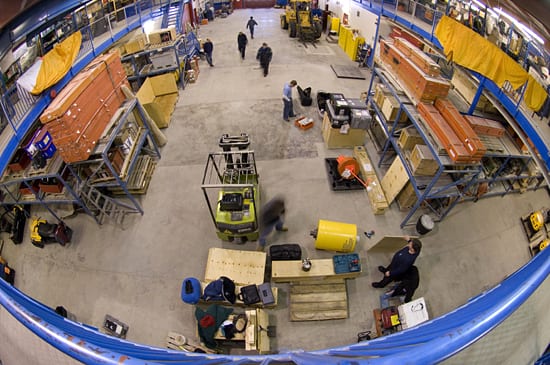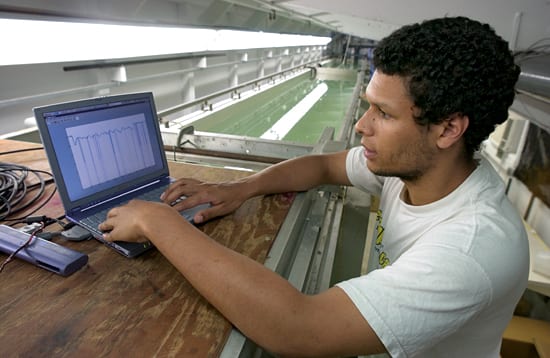Multimedia
Who You Gonna Call?
Associate Scientist Jeff Seewald and his vent-sampling team (Joint Program student Eoghan Reeves, kneeling in front, and behind from left are Peter Saccocia, associate professor of Earth Sciences at Bridgewater…
Read MoreBlack Sea Redux
Aboard the Bulgarian R/V Akademik, research specialist Alan Gagnon (in the hat) and Bulgarian scientists inspect Niskin bottles during a Black Sea cruise with Assistant Scientist Marco Coolen. The researchers…
Read MoreA Whale of a House Call
WHOI Marine mammal biologist and veterinarian Michael Moore has developed numerous techniques for working with whales from small open boats, including mechanisms for delivering medicines to whales. This spring in…
Read MoreLong-Awaited Debut
On August 28, 2007, the R/V Knorr left the WHOI dock to test a new long coring system. The test cruise is a major milestone and represents a tremendous achievement…
Read MoreBeauty in Motion
A white tern (Gygis alba) takes flight on Midway Island in the South Pacific. The birds nest on coral islands throughout the tropics, and they lay just one egg at…
Read MoreUnder the Weather (Buoy)
Ship’s boatswain Pete Liarikos (left) and mooring specialist John Kemp huddle beneath the CLIMODE surface buoy as colleagues hold the lines. Liarikos and Kemp were working to secure the buoy…
Read MoreRoll the Bones
In July 2007, a group of workers from the WHOI Facilities Department moved the display skeleton of a pilot whale a longtime fixture of the lobby of the Redfield Laboratory…
Read MoreThar She Surfaces
Looking down from the bridge seven flights above the deck of the icebreaker Oden, scientists and crew (including Captain Mattias Peterson, on the catwalk outside the bridge) keep their eyes…
Read MoreBon Voyage
WHOI computer tech BL Owens waves goodbye to the schooner Corwith Cramer as it leaves its Woods Hole dock with her husband Breck Owens in June 2007. The week-long cruise,…
Read MoreHow to make a guy feel puny
Massive ice blocks crowd the sides of the icebreaker Oden during a research expedition to the Arctic Ocean in July 2007. The ship plowed through the ice cap to makes…
Read MoreA New Sport?
Dave Morton of Ocean Acoustical Services and Instrumentation Systems, Inc., throws a sonobuoy hydrophone receiver over the side of the research vessel Endeavor during the Autonomous Wide Aperture for Cluster…
Read MoreThe Core of an Education
WHOI Summer Student Fellows Jessica Millar (left) and Skylar Bayer (right) work to disassemble a gravity corer after its recovery, while retired WHOI researcher and instructor Bruce Tripp looks on…
Read MoreThe Other Side of Paradise
MIT graduate student Shichun Huang (sitting) joins MIT/WHOI Joint Program students Jessica Warren, Matthew Jackson, and Clare Williams on a tongue of pahoehoe (smooth) lava surrounded by aa (angular) lava…
Read MoreWinter Fishing Expedition
Mooring technicians Brian Kidd (University of Delaware) and Will Ostrom (WHOI) and physical oceanographer Glen Gawarkiewicz (WHOI) recover the Scanfish, a towed vehicle that measures temperature and salinity in the…
Read MoreSticking Around
Over the years, the Narwhal Hotel in Resolute Bay, Canada, has hosted adventurers, tourists, science teams, pilots, and oil, gas, and mineral prospectors from all over the world, a fact…
Read MoreHacky Sack Attack
How do researchers pass the time, relieve some mounting tension, and try to keep warm while waiting for their robotic vehicles and instruments to come home? “It happens at least…
Read MoreHunting for Whales’ Water
Mark Baumgartner and Melissa Patrician repair a conductivity-temperature-depth (CTD) rosette on the coastal research vessel Tioga. The biologists use the CTD to detect the water properties and nutrients at various depths…
Read MoreConcentrated Effort
In the largest oceanographic field experiment in WHOI history, 62 moorings, 350 oceanographic sensors, 6 research ships, 100 tons of equipment, airplanes, satellites, undersea gliders, and more than 50 scientists…
Read MoreGlued to Their Work
Chris Griner (left) and Glenn McDonald use a special epoxy to glue together sections of ceramic tubing, or “housings,” that will be used on Nereus. These pressure vessels provide safe…
Read MoreThis Ain’t No Pleasure Cruise
Craig Marquette (in yellow) and Glen Gawarkiewicz prepare to deploy the conductivity-temperature-depth (CTD) rosette for hydrography studies north of Cape Hatteras in January 2005. The winter cruise on the research…
Read MoreTag Team
Biologist Peter Tyack (left) and senior engineer Mark Johnson have been working together to study whale behavior using Johnson’s D-tag to record whale movements, depth, and sounds on dives. The…
Read MoreRock Beats Paper and Scissors
The towed seafloor sampler Camper grabbed these volcanic rocks from the seafloor of the Arctic Ocean for study by WHOI geologist Susan Humphris and colleagues. Now that the 40-day expedition…
Read MoreOut of the Cold
For several weeks each spring, Canadian researchers and logisticians from the Polar Continental Shelf Project (Canadian Energy, Mines, and Resources Department) open up their warehouse to American colleagues from the…
Read MoreThe Sound of Science
Jesse Austin-Breneman, a summer student fellow from MIT, prepares an experiment to calibrate an echo sounder in a flow tank. The sounder is used for measuring seafloor topography from autonomous…
Read More
